Home » Food & Beverages » Glass Honey Jars
Newray has more than 50 years of experience in honey jar production. All products are food-grade packaging. We have the FSSC 22000 certificate and ISO9001:2015 factory certification. All products can provide customers with third-party testing such as SGS, and can meet FDA and CE standards.
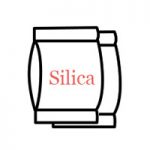
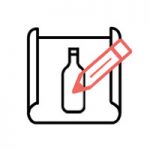
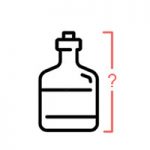
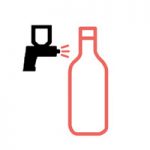
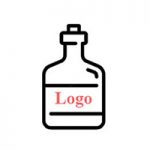
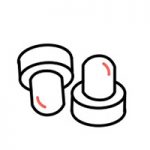
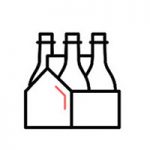

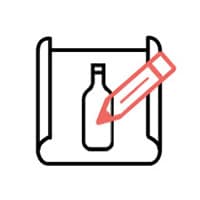
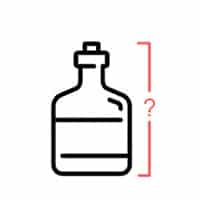
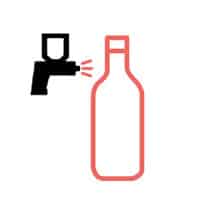

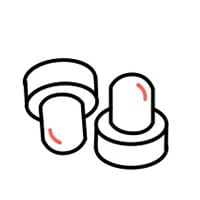
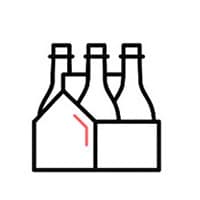
Our factory has three colors of materials to produce honey bottles to meet the needs of different markets. At present, there are ordinary white honey bottles, and the utilization rate of recycled materials is about 55%, which provides strong proof of the green and environmental protection concept of your honey products. High-white honey bottles make your honey products more colorful and meet the mid-range positioning of honey products. Crystal white honey bottles are more widely used in rare high-end honey, royal jelly, Manuka honey and other luxurious packaging.
In terms of bottle shape, we have hundreds of different shapes, styles, and capacities for you to choose. We Newray have classic honey bottles, and the molds can be used by customers. If you want to save mold fees and shorten delivery time, you can choose universal styles. We also have timeless bottle shapes, such as Orcio shapes, and Tureen Shapes honey bottles in stock, which can be shipped within a week after placing an order. In recent years, ergo Jar has been very popular in the European, American, and Oceania markets due to its simple and easy-to-label design. Some crystal white styles are also in stock all year round, with a small minimum order quantity and fast delivery.
If you haven’t found a style you like, you can contact our sales and we will design a special bottle for you, which can better achieve the purpose of brand promotion.
The quality of honey bottles usually needs to be identified from the following points:
1. Clarity and transparency of glass raw materials
Packaging glass raw materials are divided into three types: ordinary white, high white and super white flint. Different material colors meet different brand positioning and different needs of consumers. The quality of honey glass jars cannot be judged solely from the color material. The more transparent the material color, the higher the price of the honey bottle, which is usually used to hold more high-end honey, such as Manuka honey.
How to distinguish the quality under the same color material?
High-quality glass should be clear without impurities, bubbles or stones. Low-quality glass may have visible bubbles, uneven clarity or turbid appearance. Double seams, the head ring is turned up to the root of the bottle, and there are obvious brush marks on the bottle body.
2. Impact resistance of jars for honey
Consumers usually think that the heavier the glass bottle, the better, but this is a misunderstanding. Different factories have different raw material formulas. In order to pursue a more transparent glass material color, some factories add too much silica to the raw materials. The consequence of this is that the glass honey packaging bottle is handled, transported or stored. Therefore, the professional way to distinguish is to test the impact resistance of the honey glass pots. Regular glass factories will continuously and dynamically test this value during the production process.
3. Bottle mouth seal and lid quality
High quality: During the production process of high-quality glass honey jars, the parallelism of the bottle mouth, the flatness of the glass honey pot mouth and the tolerance of the honey packing container mouth size will be checked to see if they are within the normal range, and they will be matched with high-quality sealed lids to prevent leakage, maintain freshness and protect honey from contamination.
The lid of the honey bottle is usually a tinplate lid, which is coated with a circle of sealing plastisol inside. This layer of sealing ring plays a key role in the sealing of the bottle mouth. Food-grade, BPA-free sealing rings ensure that the honey remains sealed and not contaminated during storage.
Poor quality: The tolerance of the bottle mouth of the inferior honey bottle is large, which may cause leakage or the lid cannot be tightened well, which will cause great trouble to production. Jars with poor sealing design may allow air to enter, causing honey to crystallize or deteriorate faster. Poor lid quality will cause the bottle mouth to fail to seal, or the lid will be insufficiently hard, which will cause the lid to be over-tightened and leak when the machine is tightening the lid. Lids with no quality assurance may contain bisphenol A, which will affect the health of consumers, which is also expressly prohibited by law in some countries.
4. Various testing indicators of the bottle body
High-quality bulk glass honey jars will be tested for vertical axis deviation and roundness of the bottle body during production. These two indicators are related to whether customers can simply and quickly apply labels during the labeling process. Testing the thickness of various parts of the bottle body is also an important criterion for ensuring product quality.
Poor quality: Deformed or asymmetrical jars indicate that the manufacturing exceeds the standard deviation. Uneven bottle thickness will be more fragile and difficult to label with a machine.
Impact on honey quality:
Glass: does not react chemically with honey, does not contain BPA or heavy metals, etc., and can effectively maintain the natural flavor of honey. However, glass containers are fragile and have high transportation costs.
Plastic: light, durable and diverse in design. But low-quality plastic containers may release harmful chemicals and are not as effective in maintaining freshness as glass containers.
Environmental considerations:
Glass: does not release harmful substances during recycling and is more environmentally friendly. The recycling rate of glass is an important reference indicator for some large companies when choosing outer packaging, which can better reflect the social responsibility of enterprises.
Plastic: low production cost and energy consumption, but not easy to degrade, causing environmental pollution.
Consumer experience:
Glass: gives people a high-end, natural and healthy impression, and the appearance and feel can enhance the brand image and enhance consumers' desire to buy. However, glass containers are heavy and fragile.
Plastic: light and not easy to break. But consumers may think that plastic honey containers are of lower quality, affecting the high-end image of honey.
Cost and profit:
Glass: high production and transportation costs, but this gap can be made up by increasing product added value, brand image and packaging design.
Plastic: Lower cost, suitable for mass production and economic markets.
In conclusion, the choice of glass or plastic for honey storage depends on the specific needs and priorities of producers and consumers. Glass is more suitable for the high-end market that values quality and natural preservation, while plastic may be more suitable for price-sensitive consumers or large-scale distribution due to its cost-effectiveness and durability.
We custom a glass honey pot by the following steps:
First, you need to clarify your requirements and design specifications, like the cost, shape, color of material, neck type, sizes, etc.
Second: Communicate design requirements with the Bulk Glass Jars for Honey Manufacturers. Provide design sketches to Newray, and our designer will clearly outline the shape, dimensions, neck sizes, bottom details, label area, etc.
Third: Once the drawing is confirmed and the mold fee is paid, Newray will create the mold. The mold design is critical as it directly impacts the bottle's shape, stability, and production efficiency.
Fourth: Once the mold is finalized, Newray will go for a sampling run for 50-200pcs. They will be presented to the client for review, including quality checks, volume testing, and aesthetic evaluation, to ensure it meet the requirements.
Fifth: After reviewing the prototype, the client can admit Newray for mass production.
Sixth: After got the deposit, Newray will plan the production for your honey jars basing on the required dimensions, package method, QC standard and quantity.
At Newray, we specialize in providing high-quality glass packaging solutions for the honey industry. With FSSC and ISO9001 certifications, we ensure that every bottle we produce meets the highest standards of quality, safety, and reliability.
Superior Quality & Durability
We conduct impact resistance and physical and chemical property tests to ensure each bottle is durable and safe.
Our strict size control guarantees consistency in every batch.
Durable packaging materials result in an almost 0% transportation damage rate, offering you peace of mind with every order.
If any bottles have quality issues, we provide unconditional compensation for broken bottles and transportation costs.
Endless Customization
Choose from a wide range of shapes, capacities, and colors to suit your brand and market needs.
We offer glass engraving, thermal transfer printing, and screen printing to customize your packaging and enhance brand appeal.
Sustainability & Environmental Responsibility
We use 45-55% recycled glass, contributing to a greener future without sacrificing quality.
Our Certificate of Analysis (COA) helps you promote your commitment to sustainability and build consumer trust.
Flexible Production & Timely Delivery
Whether you need small-batch or bulk production, we offer flexible solutions tailored to your business.
Our customized production schedules ensure on-time delivery.
Cost Efficiency
With our weight reduction services, you can save on both production and transportation costs while maintaining high quality.
Comprehensive Support
From design consultation to order placement, delivery, and after-sales service, our team ensures a seamless process from start to finish.
Partner with Newray for Premium Glass Packaging
Choosing Newray glass bottles means investing in high-quality packaging that boosts your brand’s market presence, sustainability, and customer loyalty. Newray – Your Trusted Partner for Premium Honey Glass Packaging Solutions.
Contact us today to learn how we can support your honey packaging needs.